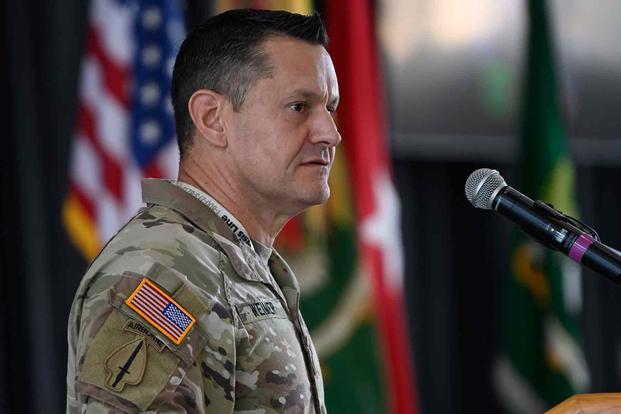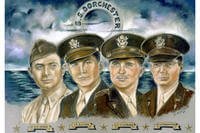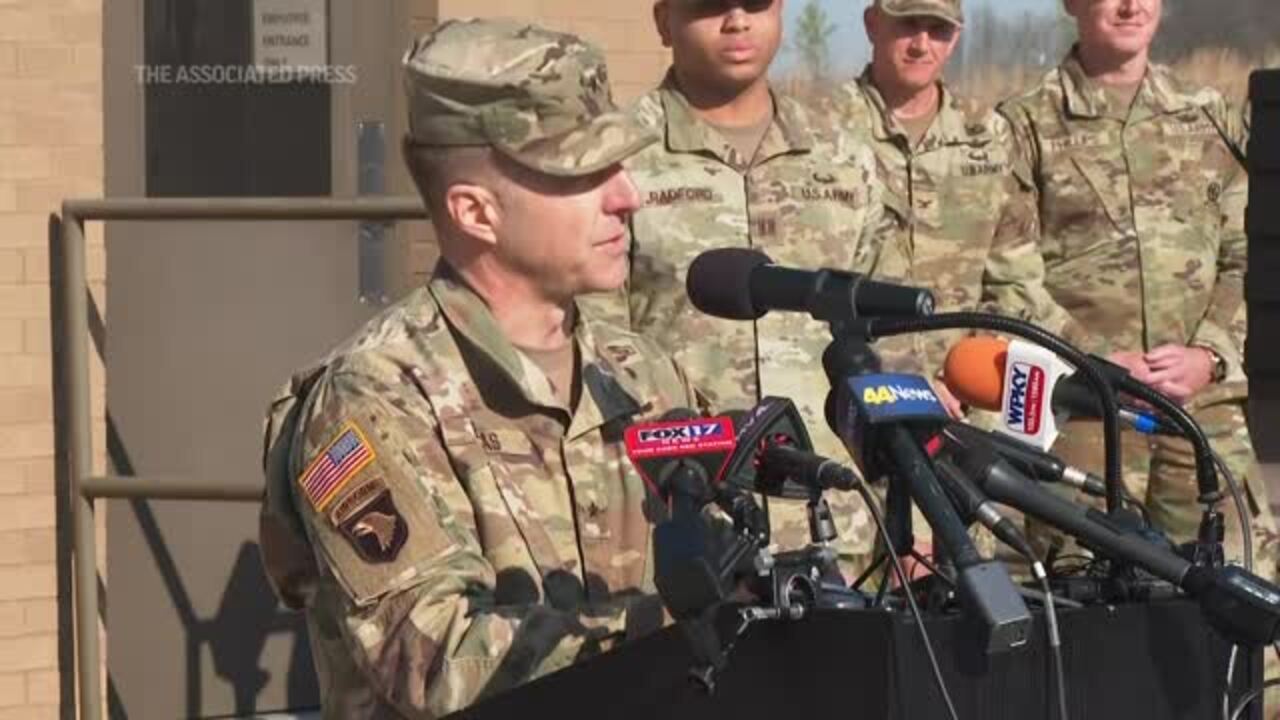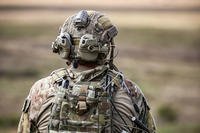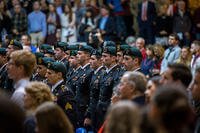The U.S. Army has 13 enlisted ranks: private, private second class, private first class, specialist, corporal, sergeant, staff sergeant, sergeant first class, master sergeant, first sergeant, sergeant major, command sergeant major and sergeant major of the Army.
These ranks are organized into three general layers: Junior Enlisted (E-1 through E-4 as they rise up the ranks); NCOs who serve as the backbone of leadership (E-4 through E-6); and Senior NCOs (E-7 through E-9), the officers with the most experience.
You May Also Like: Army Basic Training PFT
- Junior Enlisted Ranks (E-1 through E-4)
- Non-Commissioned Officer Ranks (E-4 through E-6)
- Senior Non-Commissioned Officer Ranks (E-7 through E-9)
- Sergeant Major of the Army (E-9S)
Army Ranks: Junior Enlisted (E-1 to E-3)
The term as a military rank seems to come from the 16th century when individuals had the privilege of enlisting or making private contracts to serve as private soldiers in military units. Before then, many soldiers were forced (conscripted) into service by royalty or feudal lords.
Some sources claim that the use of "private" as an official "rank" dates back to the 18th century, when the French Army, under Napoleon, established the permanent rank of Soldat.
Related: Want to join the military? You need to take the ASVAB
Junior Enlisted in the Army -- privates and specialists -- are promoted automatically based on their time in service and time in pay grade. Privates (E-1) are promoted to private 2nd class after completing six months of service, and PV2s normally are promoted to PFC when they have 12 months' time in service and four months' time in grade. In general, soldiers earn the rank of specialist (E-4) after having served a minimum of two years and attending a specific training class.
Private (E-1)
Private, the lowest Army rank, normally is held only by new recruits while at Basic Combat Training (BCT), but the rank occasionally is assigned to soldiers after a disciplinary action has been taken. The Army private (E-1) wears no uniform insignia.
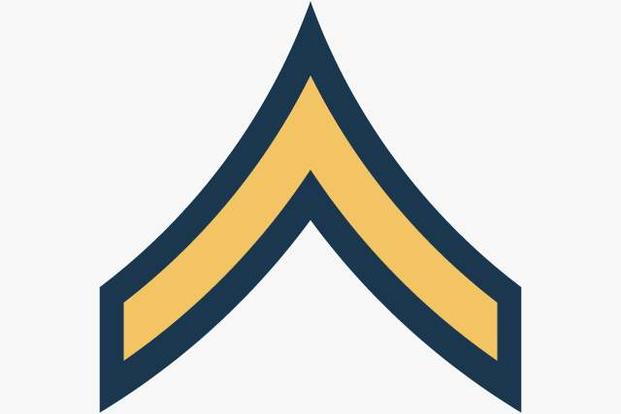
Private 2nd Class (E-2)
Private 2nd class (PV2) is the first promotion most enlisted soldiers can earn after completing BCT. The private's job is to apply the new skills and knowledge learned during basic training and to continue to learn how to follow orders given by higher-ranked supervisors.
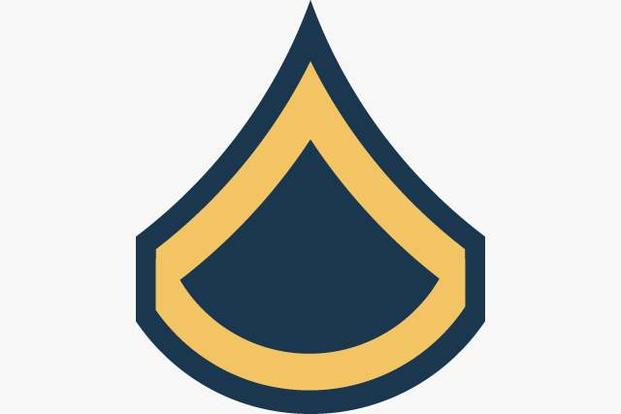
Private First Class (E-3)
Private first classes (PFC) are the basic workforce strength and rank of the U.S. Army. PFC is the point in which junior enlisted soldiers begin the transition from apprentice to journeyman by developing technical and leadership skills.
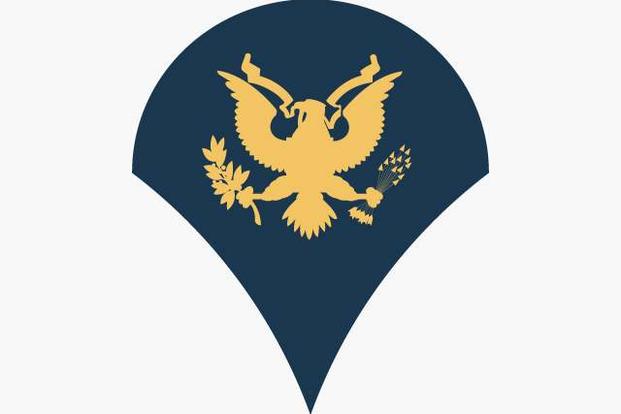
Army Specialist (E-4)
Specialist (SPC) is considered one of the junior enlisted ranks in the U.S. Army. Ranked above private first class (E-3) and holding the same pay grade as the corporal, the specialist is not considered an NCO.
The specialist's job is focused on technical expertise, and they normally have less personnel leadership responsibilities than corporals. They often are promoted to the E-4 pay grade due to enlisting. Those enlisting with a four-year college degree or who have certain specialized civilian skills or training can enter BCT as a specialist.
Army Non-Commissioned Officers (E-4 to E-6)
Like nearly all the other branches of the Armed Forces, the United States Army consider all ranks E-4 and above to be NCOs. Corporals (E-4) are referred to as junior NCOs, however, they are given the same respect as any other NCO.
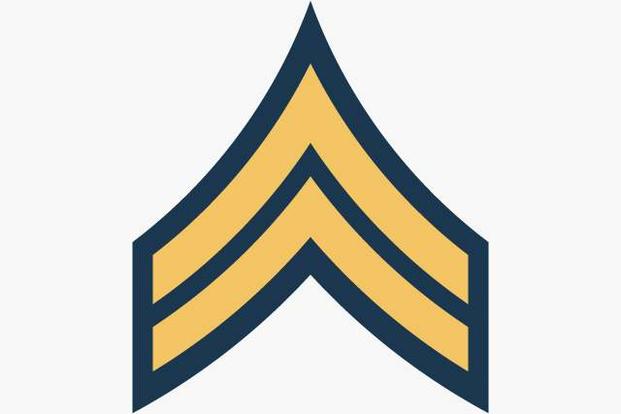
Corporal (E-4)
The rank of corporal was established in 1775 with the birth of the Army and the NCO Corps. Along with the rank of sergeant, the corporal is the only rank that never has disappeared from the NCO Corps.
The rank of corporal always has been placed at the base of the NCO ranks. For the most part, corporals have served as the smallest unit leaders in the Army: principally, leaders of teams.
Like the grade of sergeant, corporals are responsible for individual training, personal appearance and cleanliness of their soldiers.
As the command sergeant major is known as the epitome of success in the NCO Corps, the corporal is the beginning of the NCO Corps. As the NCO Corps is known as the backbone of the Army, the corporal is the backbone of the NCO Corps.
Information Courtesy of the U.S. Army
Moving up the Army ranks: Normally, unit commanders may advance PFCs to corporal once they have met the following qualifications:
- 26 months in service
- Six months' time in grade, waiver-able to three months
- Security clearance appropriate for the MOS in which promoted; advancement may be based on granting an interim security clearance.
Like the junior enlisted ranks, commanders may advance soldiers on an accelerated basis.
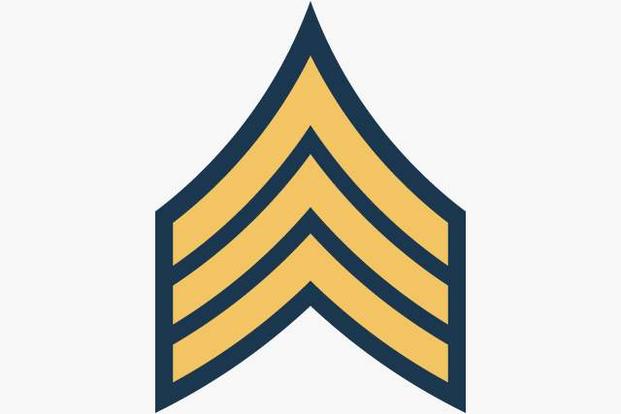
Sergeant (E-5)
Sergeants (SGT) operate in an environment where the sparks fly -- where the axe meets the stone. Although not the lowest level of rank where command is exercised, this level is the first at which enlisted soldiers are referred to as sergeant, and of all the grades of the NCO, this one, very possibly, has the greatest impact on the lower ranking-soldiers. Privates, who are the basic manpower strength and grade of the Army, generally have sergeants as their first NCO leader. It is the grade sergeant that the privates will look to for example.
Like the next grade, the staff sergeant, the sergeant is responsible for the individual training, personal appearance and the cleanliness of their soldiers.
The sergeant also is responsible for ensuring that:
- Each member of their unit is trained to competency in their MOS, as prescribed in the appropriate soldiers manual.
- All government property issued to members of their unit is maintained properly and accounted for at all times, and discrepancies are reported promptly.
- While on duty status, they are ready at all times to report to the location and activity of all members of their unit.
- Their unit is trained to function in its primary mission role.
The authority of the sergeant is equal to that of any other grade or rank of the NCO. Professionally competent leaders inherently command respect for their authority, and the sergeant must be unquestionably competent in order to carry out the mission correctly, accomplish each task and care for assigned soldiers.
The rank of sergeant is not a position for learning how to become a leader; no apprenticeship here. While certainly the new sergeant will be developing new skills, strengthening old ones and generally getting better, he is a sergeant and is therefore no less a professional than those grades of rank to follow.
Moving up the Army ranks: Unlike the promotion processes for privates, specialists and corporals, promotions to sergeant (SGT) and staff sergeant (SSG) is based on an Army-wide competition. The competition is based on a point system that grants points for firing range scores, performance evaluations, physical fitness, education level, awards and promotion board ranking.
Corporals and specialists must meet the following basic eligibility criteria to compete:
- Command recommendation
- 36 months' time in service
- Eight months time in grade
- Must graduate the primary leadership development course (PLDC)
- Possess a high school diploma, GED equivalency or college degree.
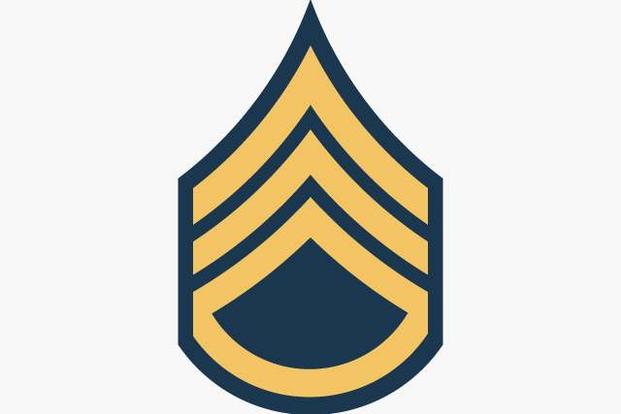
Staff Sergeant (E-6)
The staff sergeant rank closely parallels that of the sergeant in duties and responsibilities. In fact, the basic duties and responsibility of all the NCO ranks never change, but there are significant differences between this step in the NCO structure and the preceding one.
The major difference between the staff sergeant and the sergeant is not, as often mistakenly believed, authority but rather sphere of influence. The staff sergeant is in daily contact with large numbers of soldiers and generally has more equipment and other property to maintain.
The SSG often has one or more sergeants who work under their direct leadership. The SSG is responsible for the continued successful development of sergeants as well as the soldiers in their section, squad or team.
Moving up the Army ranks: SSG candidates must meet the following basic eligibility criteria to compete:
- Command recommendation
- 84 months' time in service
- 10 months' time in grade
- Must graduate the primary leadership development course (PLDC)
- Possess a high school diploma, GED equivalency or college degree
Army Ranks: Senior Non-Commissioned Officers (E-7 to E-9)
Although the Army does not make the official distinction in the rank structure, enlisted ranks of sergeant first class and above (E-7 to E-9) generally are referred to as Senior NCOs, and they carry increasing levels of responsibility and demand greater levels of respect and deference.
Although there are only three pay grades, the SNCO ranks actually cover six separate ranks or designations -- sergeant first class (platoon sergeant), master sergeant, first sergeant, sergeant major, command sergeant major and sergeant major of the Army.
Unlike the promotion processes for private through staff sergeant, unit commanders have little to do with the promotion process to the SNCO ranks. These promotions are centralized completely at the Headquarters of the Department of the Army (HQDA).
There is no minimum time-in-grade (TIG) requirement for promotion to the Army SNCO ranks, but candidates must meet the following minimum time-in-service (TIS) requirements to be eligible for promotion:
- Sergeant first class (E-7) -- six years.
- Master sergeant/first sergeant (E-8) -- eight years.
- Sergeant major (E-9) -- nine years.
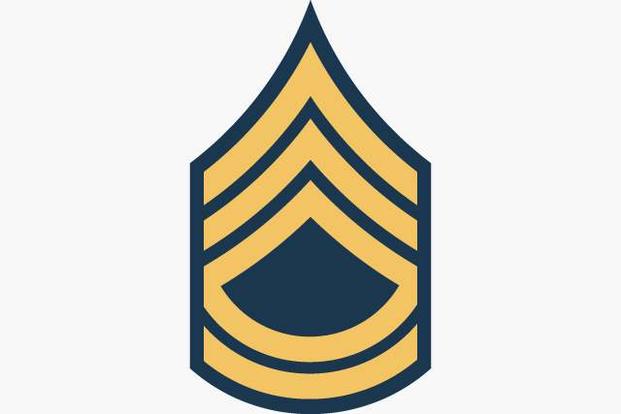
Sergeant First Class (Platoon Sergeant) (E-7)
The SFC is the first level at which the term senior NCO properly applies. The platoon sergeant or sergeant first class generally has 15 to 18 years or more of military experience and is expected to bring that experience to bear in quick, accurate decisions that are in the best interest of the mission and the soldier.
Depending on experience and billet assignments, the SFC's role may be that of platoon sergeant or NCOIC (NCO in Charge) of the section.
Platoon sergeant is a duty position, not a rank. The platoon sergeant is the primary assistant and adviser to the platoon leader, with the responsibility of training and caring for soldiers. The platoon sergeant takes charge of the platoon in the absence of the platoon leader. Platoon sergeants teach collective and individual tasks to soldiers in their squads, crews or equivalent small units.
The position title of platoon sergeant is considered key in the command structure of the Army. The platoon sergeant generally has several staff sergeants who work under his direct leadership.
During the Vietnam era, the platoon sergeant was referred to affectionately as the "Plat-Daddy," and although the term has since faded, the role remains that of the "Father of the Platoon."
Information Courtesy of U.S. Army
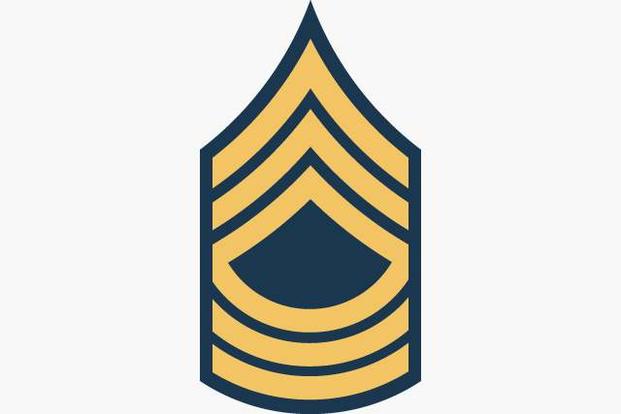
Master Sergeant (E-8)
The master sergeant is the principal NCO at the battalion level, and often higher. They are not charged with all the leadership responsibilities of a first sergeant, but are expected to dispatch leadership and other duties with the same professionalism.
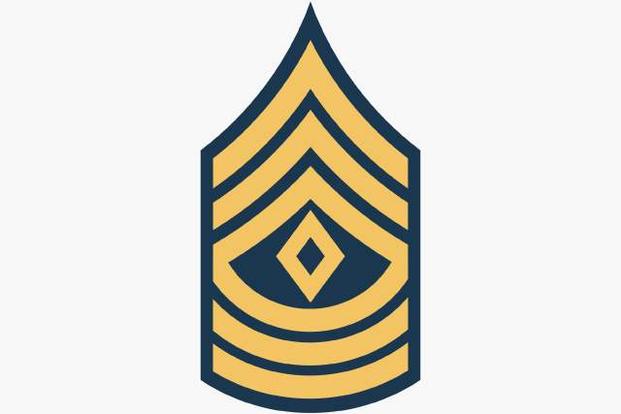
The First Sergeant (E-8)
When you are talking about the first sergeant, you are talking about the lifeblood of the Army. When 1SGs are exceptional, their units are exceptional, regardless of any other single personality involved. Perhaps their rank insignia should be the keystone rather than the traditional one depicted here. It is the first sergeant at whom almost all unit operations merge. The first sergeant holds formations, instructs platoon sergeants, advises the commander and assists in training of all enlisted members.
The 1SG may swagger and appear, at times, somewhat of an exhibitionist, but he is not egotistical. The first sergeant is proud of the unit and understandably wants others to be aware of his unit's success.
The title of address for this grade is not sergeant but first sergeant. There is a unique relationship of confidence and respect that exists between the first sergeant and the commander not found at another level within the Army.
In the German Army, the first sergeant is referred to as the "Mother of the Company." The first sergeant is the provider, the disciplinarian, the wise counselor, the tough and unbending foe, the confidant, the sounding board, everything that we need in a leader during our personal success or failure. The Mother of the Company...
Information Courtesy of U.S. Army
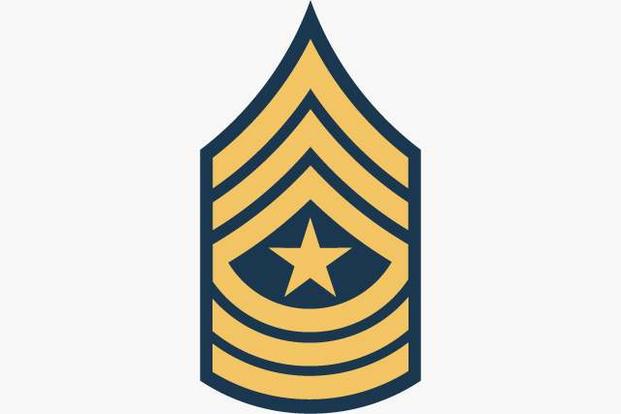
Sergeant Major (E-9)
The sergeant major is the key enlisted member of staff elements at levels higher than battalion. The sergeant major's experience and ability are equal to that of the command sergeant major, but the sphere of influence regarding leadership is limited generally to those directly under his charge.
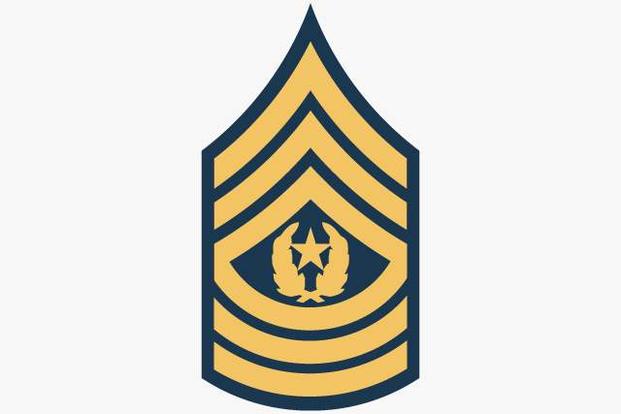
Command Sergeant Major (E-9)
Enlisted soldiers who attain the distinction of being selected by the Department of the Army for participation in the command sergeants major program are the epitome of success in their chosen field. There is no higher grade of rank, except sergeant major of the Army, for enlisted soldiers, and there is no greater honor.
The command sergeant major carries out policies and standards of the performance, training, appearance and conduct of enlisted personnel. The command sergeant major advises and initiates recommendations to the commander and staff in matters pertaining to the local NCO support channel.
Perhaps slightly wiser and more experienced than the first sergeant, the CSM is expected to function completely without supervision. Like the old sage of times past, the command sergeant major's counsel is expected to be calm, settled and unequivocally accurate, but with an energy and enthusiasm that never wanes, even in the worst of times.
Assignable to any billet in the Army, the CSM is all those things, and more, of each of the preceding grades of rank.
Information Courtesy of U.S. Army
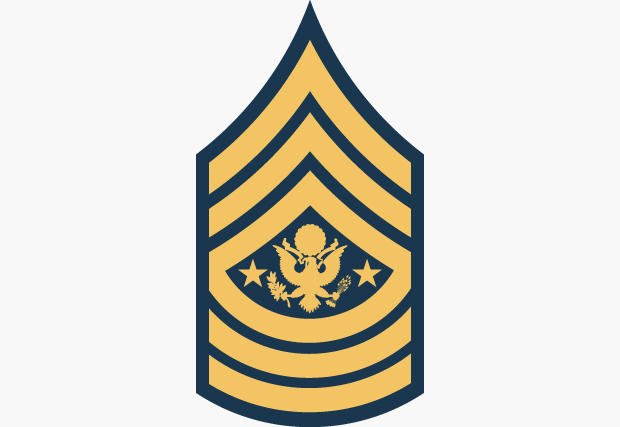
Sergeant Major of the Army (E-9S)
The sergeant major of the Army (SMA) is a rank held by only one enlisted soldier at a time. The holder of this rank is the most senior enlisted member in the Army. The SMA's primary function is to address the issues of enlisted soldiers at the Army's highest levels. The SMA is the senior enlisted adviser to the Army Chief of Staff and is selected based on their outstanding leadership, extensive experience and ability to communicate up and down the Army chain of command. The SMA is given the highest level of honor and respect of any other enlisted soldier.
Each SMA's duties are determined by the current chief of staff. As a rule, though, the SMA serves as the Army hierarchy's eyes and ears, keeping the chief of staff abreast on virtually any subject that affects enlisted soldiers and their families.
Interested in Joining the Military?
We can put you in touch with recruiters from the different military branches. Learn about the benefits of serving your country, paying for school, military career paths, and more: sign up now and hear from a recruiter near you.
